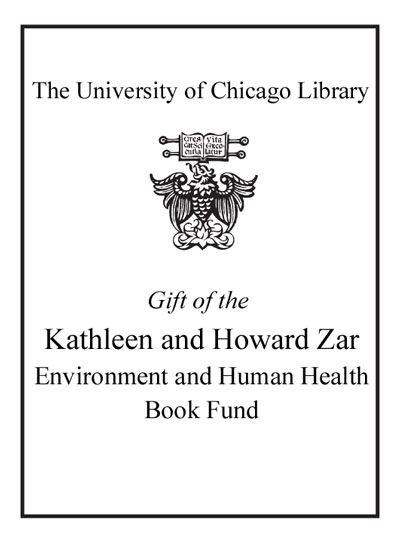Review by Choice Review
Covered in yellow and black, this paperback by Ginsberg (Univ. of Connecticut School of Medicine and CT Dept. of Public Health) and Toal (CT DPH) resembles the offerings of a popular self-help series. Bulleted lists, risk index graphs, "toxic files," question-and-answer sections, and a conversational tone confirm its audience as general readers. Nevertheless, the authors sort out confusing and sometimes conflicting information about confirmed and perceived health hazards, including lead, mercury, asbestos, radon, pesticides, food additives, dioxins and dioxin-like compounds, air and water pollutants, and mold in foods, homes, schools, and workplaces. They define the basic terminology of toxicology and provide guidelines that specify ways to avoid or limit exposures. An appendix lists resources for those seeking additional or more current information. Additional chapters address home buyers' and consumers' concerns and cancer clusters. References include state and federal government documents, peer-reviewed journal articles, and environmental organizations' reports, along with newspaper articles. Although this book includes recent topics, including perfluorooctanoic acid/perfluorooctane sulfonate (PFOA/PFOS) release from nonstick cookware, Richard Philip's Ecosystems and Human Health (2nd ed., CH, Apr'02, 39-4613) is a more scholarly alternative for college students and above. Summing Up: Recommended. General readers. C. G. Ryan Drew University
Copyright American Library Association, used with permission.
Review by Library Journal Review
Ginsberg and Toal-toxicologists for the Connecticut Department of Public Health-have created a comprehensive bible of hazardous substances that impact every individual in the United States. While explaining the major toxins of lead, radon, mold, and asbestos, they also delve into pesticides and chemicals in consumer products, food, water, air, and soil. Chapters describe each toxin, address the myths and realities surrounding it, and discuss how people come into contact with the substance and how to avoid it. Charts illustrate the toxicity, exposure, and risk index for each contaminant. Suggestions for testing one's own environment through the local health department, water service, and so forth are concrete and achievable; important points are boxed for emphasis. Tips are provided for diverse subjects such as how to microwave foods in plastic safely and how to make a homemade "green" bubble bath. A resources appendix provides Internet sites for more information. A fascinating, albeit somewhat frightening, account that should be available in most collections.-Janet M. Schneider, James A. Haley Veterans' Hosp., Tampa (c) Copyright 2010. Library Journals LLC, a wholly owned subsidiary of Media Source, Inc. No redistribution permitted.
(c) Copyright Library Journals LLC, a wholly owned subsidiary of Media Source, Inc. No redistribution permitted.
Review by Choice Review
Review by Library Journal Review


